Naomi Baes
A General Framework to Evaluate Methods for Assessing Dimensions of Lexical Semantic Change Using LLM-Generated Synthetic Data
Mar 11, 2025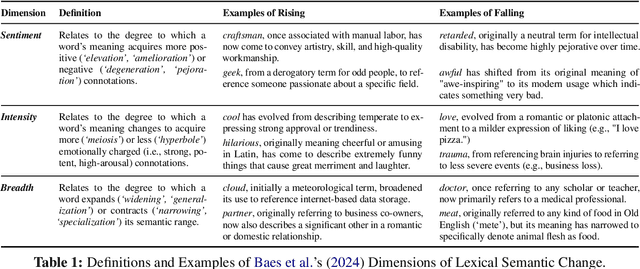
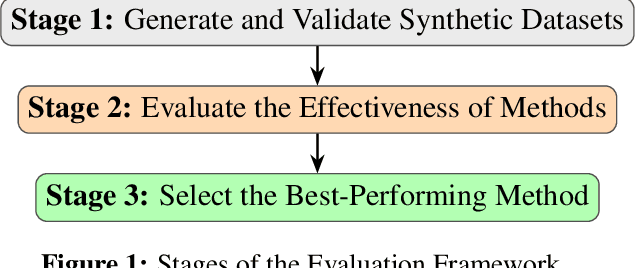
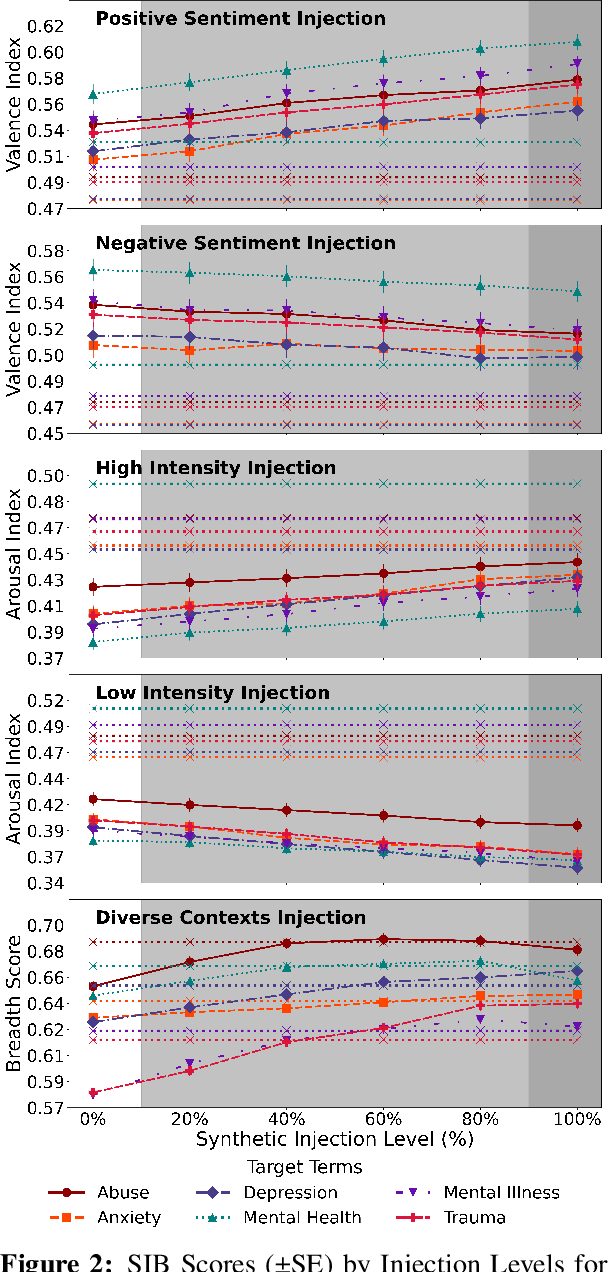
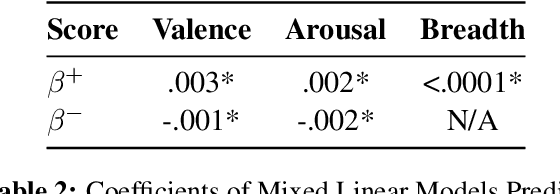
Abstract:Lexical Semantic Change (LSC) offers insights into cultural and social dynamics. Yet, the validity of methods for measuring kinds of LSC has yet to be established due to the absence of historical benchmark datasets. To address this gap, we develop a novel three-stage evaluation framework that involves: 1) creating a scalable, domain-general methodology for generating synthetic datasets that simulate theory-driven LSC across time, leveraging In-Context Learning and a lexical database; 2) using these datasets to evaluate the effectiveness of various methods; and 3) assessing their suitability for specific dimensions and domains. We apply this framework to simulate changes across key dimensions of LSC (SIB: Sentiment, Intensity, and Breadth) using examples from psychology, and evaluate the sensitivity of selected methods to detect these artificially induced changes. Our findings support the utility of the synthetic data approach, validate the efficacy of tailored methods for detecting synthetic changes in SIB, and reveal that a state-of-the-art LSC model faces challenges in detecting affective dimensions of LSC. This framework provides a valuable tool for dimension- and domain-specific bench-marking and evaluation of LSC methods, with particular benefits for the social sciences.
BRIGHTER: BRIdging the Gap in Human-Annotated Textual Emotion Recognition Datasets for 28 Languages
Feb 17, 2025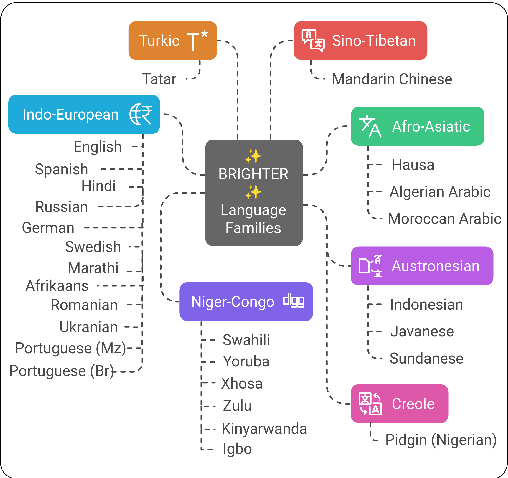
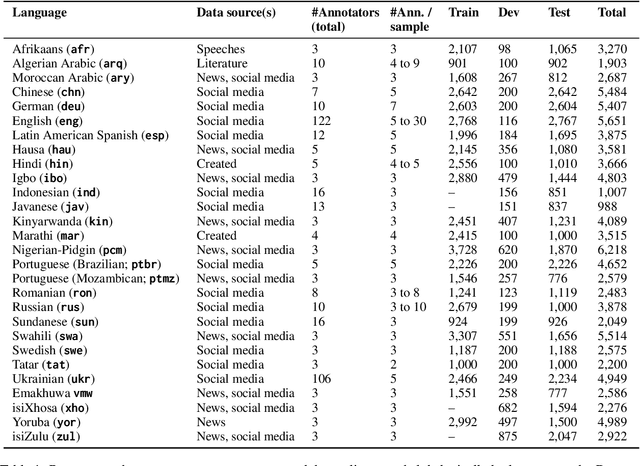
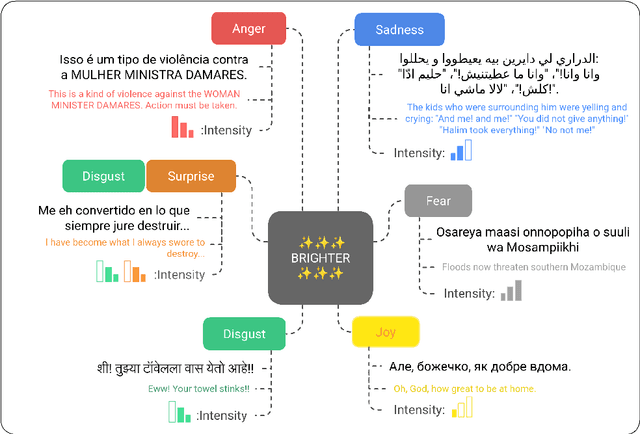
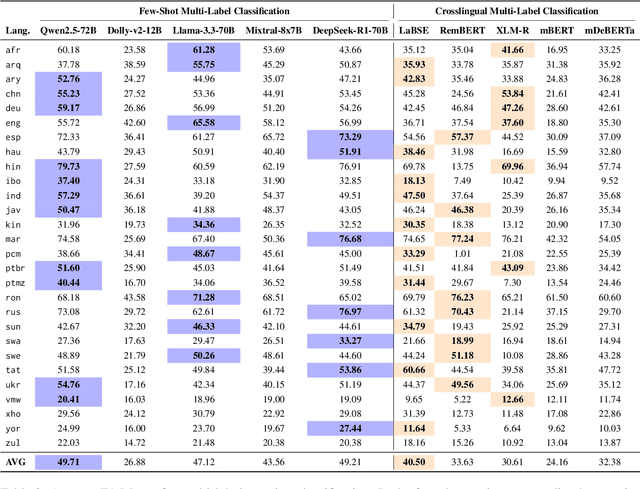
Abstract:People worldwide use language in subtle and complex ways to express emotions. While emotion recognition -- an umbrella term for several NLP tasks -- significantly impacts different applications in NLP and other fields, most work in the area is focused on high-resource languages. Therefore, this has led to major disparities in research and proposed solutions, especially for low-resource languages that suffer from the lack of high-quality datasets. In this paper, we present BRIGHTER-- a collection of multilabeled emotion-annotated datasets in 28 different languages. BRIGHTER covers predominantly low-resource languages from Africa, Asia, Eastern Europe, and Latin America, with instances from various domains annotated by fluent speakers. We describe the data collection and annotation processes and the challenges of building these datasets. Then, we report different experimental results for monolingual and crosslingual multi-label emotion identification, as well as intensity-level emotion recognition. We investigate results with and without using LLMs and analyse the large variability in performance across languages and text domains. We show that BRIGHTER datasets are a step towards bridging the gap in text-based emotion recognition and discuss their impact and utility.
A Multidimensional Framework for Evaluating Lexical Semantic Change with Social Science Applications
Jun 10, 2024



Abstract:Historical linguists have identified multiple forms of lexical semantic change. We present a three-dimensional framework for integrating these forms and a unified computational methodology for evaluating them concurrently. The dimensions represent increases or decreases in semantic 1) sentiment, 2) breadth, and 3) intensity. These dimensions can be complemented by the evaluation of shifts in the frequency of the target words and the thematic content of its collocates. This framework enables lexical semantic change to be mapped economically and systematically and has applications in computational social science. We present an illustrative analysis of semantic shifts in mental health and mental illness in two corpora, demonstrating patterns of semantic change that illuminate contemporary concerns about pathologization, stigma, and concept creep.
 Add to Chrome
Add to Chrome Add to Firefox
Add to Firefox Add to Edge
Add to Edge